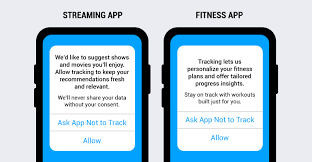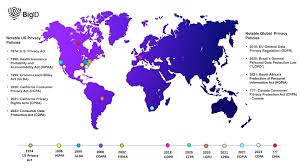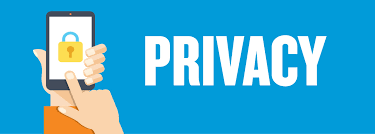Government regulations, GDPR mobile privacy, CCPA mobile data, app tracking transparency, digital privacy laws — Governments and platforms are rewriting the rules of mobile privacy, and the result touches every smartphone user. From the European Union’s GDPR to the United States’ CCPA/CPRA, national data protection acts, and platform policies like Apple’s App Tracking Transparency, regulators and big tech are reshaping what personal data apps can collect, how it’s processed, and the rights you have to control your information.
1. Why Mobile Privacy Is Different:
Mobile devices collect rich, continuous streams of personal data: precise location, motion, contacts, photos, microphones, sensors, and a history of apps and browsing. Governments and privacy regulators treat mobile data as particularly sensitive because:
- It enables high-resolution tracking of individuals’ intimate lives.
- Devices combine many data streams, creating powerful behavioral profiles.
- Apps and ad networks can share and trade this data across services and borders.
Because of these risks, regulators have focused on mobile both through general privacy laws and via platform-specific rules that target app ecosystems.
2. Major Regulatory Frameworks That Changed the Game:
GDPR (European Union):
The General Data Protection Regulation (GDPR) introduced a sweeping set of user rights and obligations for organizations that process personal data. It requires data controllers to have lawful bases for processing, demand meaningful consent for certain uses, implement data protection by design, and provide rights such as access, rectification, deletion, and portability. The GDPR took effect in May 2018 and is the backbone of modern global privacy law.
Why GDPR matters for mobile: it forces apps that operate in EU markets to limit data collection, support user access and deletion requests, and document cross-border transfers (e.g., to cloud or ad partners).
CCPA / CPRA (California):
The California Consumer Privacy Act (CCPA) and its enhancement, the California Privacy Rights Act (CPRA), gave U.S. residents new rights over personal information—right to know, delete, and opt-out of “sale” of personal information. California’s rules changed how mobile apps disclose data practices and offer opt-outs in advertising contexts. Businesses subject to CCPA/CPRA now must provide transparency notices and data-handling choices to California users.
India’s Digital Personal Data Protection Act (DPDP) 2023:
India enacted the Digital Personal Data Protection Act (DPDP) in 2023 to regulate digital personal data processing within India. It creates obligations for data fiduciaries, emphasizes consent and purpose limitation, and sets up mechanisms for grievance redressal. This law directly affects apps and services operating in India or offering services to Indian residents.
Emerging and Draft Laws (Global Snapshot):
Countries from Brazil to South Africa to Southeast Asia have passed or proposed laws with GDPR-like features (rights, data protection authorities, fines). In some jurisdictions, data localization or national security exceptions introduce extra complexity for mobile services that rely on global cloud infrastructures.
3. Platform Rules and Industry Responses:
Apple: App Tracking Transparency & Privacy Labels:

Apple’s App Tracking Transparency (ATT) framework requires apps to request explicit permission before tracking users across apps and websites for advertising or data brokerage. Apple also requires App Store “privacy labels” that summarize what data an app collects and how it’s used. These platform measures complement legal rules by changing the economics of mobile advertising and making consent explicit at the device level.
Effect: ATT forced adtech to adapt—some measurement and targeting techniques became harder or required new, more privacy-preserving approaches.
Google & the Android Ecosystem:
Google has also updated Play Store policies, introduced privacy labels, and developed privacy-preserving ad measurement techniques. Android’s permission model continues to evolve toward one-time permissions, limited background access, and tighter controls on sensors and location.
App Stores, SDKs & Third-Party Services:
Regulation frequently targets not only app developers but the SDKs and third-party services embedded within apps (ad SDKs, analytics, social plugins). Regulators have penalized companies for failing to control third-party data sharing and for misleading disclosures.
4. How Regulations Change Mobile App Behavior:
Data Minimization & Purpose Limitation:
Modern regulation pushes apps to collect only what they need (“data minimization”) and to use data only for stated purposes. That shift reduces unfettered data hoarding and forces developers to think about why each field or permission is necessary.
Consent Mechanisms and Transparency:
Apps must present clear, granular consent—not long legalese buried in a TOS. Regulators demand transparency about what is collected, who gets it, and why.
Rights Fulfillment (Access, Deletion, Portability):
Mobile apps now must implement mechanisms to respond when users request access to their data, ask for deletion, or request portability—technical features that several app teams had to engineer quickly after laws took effect.
Localisation and Data Transfer Rules:
Some jurisdictions require data localization, or at least documented safeguards for transfers, which impacts how apps architect cloud services and CDNs.
5. Carrier, Device-Maker and OS Roles:
Regulation doesn’t operate in a vacuum: carriers, OS vendors and device makers play roles too.
- Carriers: Regulators sometimes require telecoms to retain call metadata for security or to restrict certain kinds of tracking. Carriers also implement lawful intercept frameworks that may clash with privacy aims.
- Device makers (Apple, Samsung, Xiaomi): Ship privacy controls (e.g., granular permissions, secure enclaves) that help users exercise rights.
- OS vendors (iOS/Android): Set platform-level policies that shape how apps request and use sensitive data.
These ecosystem players can be enforcers by design—Apple’s ATT is a device-level rule, not a government law, but it had regulatory-like impact on privacy outcomes.
6. Real-World Impacts on Consumers:
Greater Transparency and Control:
Users in GDPR and CCPA territory gained rights to see what data is collected, to opt out or request deletion, and to receive privacy notices in straightforward language.
Advertising & App Business Models Shift:
The adtech supply chain had to adapt. Less permissive tracking made some targeting less precise and pushed marketers toward contextual advertising, first-party data strategies, and privacy-preserving measurement. This affected the economics of many free apps.
Enforcement & Fines:
Regulators have levied significant fines for non-compliance. High penalties under GDPR (percentage of global turnover) sent a strong signal to global firms to prioritize privacy compliance.
Inequalities in Protection:
Where national protections are weak or unfinished, users remain exposed. For example, Pakistan was reported to be drafting a Personal Data Protection Bill, but until robust enforcement frameworks are in place, protections can be uneven. Legal overviews flag Pakistan’s ongoing legislative process in this area.
7. Tensions & Trade-offs:
Law Enforcement & National Security:
Governments sometimes require access to data for law enforcement or national security. Striking the right balance between privacy and public safety is contentious; some countries create mandatory data access frameworks that privacy advocates criticize.
Interoperability vs Privacy:
Many international services depend on cross-border data flows. Privacy rules that force localization can fragment services and raise costs.
Innovation vs Regulation:
While regulation protects citizens, overly prescriptive rules risk slowing innovation or shifting compliance costs onto smaller app developers who lack legal teams.
8. Country Spotlights (how different regimes affect mobile privacy):
European Union (GDPR):

The EU’s GDPR sets a high bar: consent, legal bases, data protection officers for large processors, and strong enforcement. For mobile apps, this meant app publishers had to audit trackers, introduce consent UIs, and document data flows.
United States (California + Sectoral Laws):
The U.S. lacks a single federal privacy law but California’s CCPA/CPRA has consumer rights and enforcement mechanisms that impact mobile apps serving Californians. Sectoral laws (health, finance) add further constraints.
India (DPDP Act 2023):
India’s DPDP Act introduces national rules tailored to its context: consent, data fiduciary obligations and grievance redressal. Mobile apps operating in India must comply with its rules and the DPDP Act influences how platforms adapt services for the Indian market.
Pakistan (Draft Bill & Regulatory Landscape):
Pakistan has been developing personal data protection legislation; in the meantime, domain regulators (PTA) and sectoral bodies shape practice. Legal guides note the draft bill’s status and the role of emerging data protection authorities once the law is enacted.
9. What Businesses Must Do to Comply (Practical Checklist):
- Data mapping: Know where mobile data comes from, how it flows, and which third parties receive it.
- Minimize data collection: Only request permissions and collect fields that are necessary.
- Consent & UX: Build clear, non-deceptive consent prompts on mobile (avoid auto-checked boxes).
- Privacy by design: Integrate encryption, secure storage, and limited retention by default.
- Rights fulfillment: Implement APIs and admin flows to handle access, deletion, and portability requests.
- Third-party audits: Vet ad SDKs, analytics vendors, and partners for lawful handling.
- Cross-border safeguards: Use SCCs or approved transfer mechanisms where required.
- Incident response: Have a GDPR-/CCPA-aware breach notification plan.
These steps are not just legal boxes to tick—they materially reduce risk and improve trust with users.
10. Practical Advice for Users: How to Protect Your Mobile Privacy:
- Audit app permissions: Revoke unnecessary access to location, camera, microphone.
- Use platform privacy tools: On iOS, use App Tracking Transparency and privacy reports; on Android, use one-time permissions.
- Check app privacy labels and notices: Before installing, read what data an app says it collects.
- Limit ad personalization & tracking: Opt out where available (system settings, in-app toggles).
- Use secure messaging & VPNs cautiously: They can help but verify provider policies.
- Exercise your rights: If subject to GDPR, CCPA or DPDP, submit access or deletion requests as needed.
11. The Road Ahead: Trends & Recommendations:
Privacy-Preserving Measurement & Ads:
Expect more privacy-preserving ad measurement protocols (aggregated reporting, differential privacy) as an alternative to cross-app identifiers.
Stronger Global Convergence:
While laws differ, we’re seeing convergence on core principles: consent, purpose limitation, data minimization, and strong user rights.
More Platform-Level Controls:
Operating systems will continue adding controls (e.g., sensor access, background activity limits) that regulators and consumers will welcome.
Recommendations for Policymakers:
- Design laws that protect privacy but allow lawful, transparent public safety access.
- Support small developers with compliance guidance and safe harbor frameworks.
- Promote international cooperation on cross-border transfers and enforcement.
12. Conclusion
Government regulations—whether comprehensive laws like GDPR and DPDP, regional rules like CCPA/CPRA, or platform policies like Apple’s ATT—have fundamentally reshaped mobile privacy. They reduced opaque tracking, forced clearer consent flows, and created concrete rights for users. The result is a healthier privacy baseline, but gaps remain: regulatory fragmentation, enforcement resource limits, surveillance exceptions, and the persistent power of adtech.
For users, the takeaway is to claim your rights, tighten permissions, and favor services with transparent practices. For companies, the mandate is to design privacy into products, document data flows, and stay ahead of legal changes. Together—through law, technology, and informed users—we can make mobile privacy meaningful in daily life.
13. References & External Links:
- GDPR — official consolidated text. GDPREUR-Lex
- GDPR overview & guides. GDPR.eu
- California Attorney General — CCPA information and guidance. California Attorney General
- CCPA / CPRA FAQs & resources. California Privacy Protection Agency
- Apple Developer — App Tracking Transparency documentation. Apple Developer
- Apple Support — user guidance on ATT. Apple Support
- India — Digital Personal Data Protection Act 2023 (MEITY). meity.gov.in
- Pakistan — data protection practice guide / legislative updates. Global Practice Guidesgloballegalpost.com
- Wired / news pieces on App Privacy Labels & ATT. WIRED+1




Leave a Reply